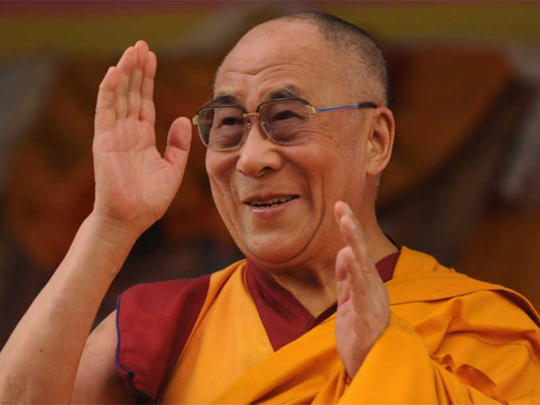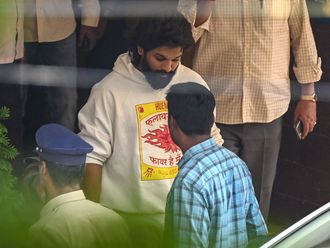
The impact of the 19th congress of the Communist Party of China and affirmation of President Xi Jinping as China’s “most powerful” leader in decades matters for India — especially on the “Tibet Issue”, which also intersects with long-standing conflicts over the China-India border.
The Dalai Lama’s well-known desire to return home has taken on new urgency, following this November 23 statement by the Tibetan leader: “The past is past, Tibetans want to stay with China,” he said. These words carry a serious political overtone, coming as they do immediately after the party congress and amid the current Doklam border standoff between India and China.
The Dalai Lama’s statement that he is “not seeking independence for Tibet and wishing to stay with China,” is not in itself new. However, his declaration that “he would return to Tibet at once, if China agrees” has sparked fresh speculation of a possible rapprochement with Beijing. The sign of rapid thawing strangely comes on the heels of United States President Donald Trump’s recent visit to Beijing. Most likely, Trump would not have made Tibet a pressure point in his dealings with Beijing and would have had no qualms in dumping the Dalai Lama (whom the US fostered for more than half a century) on the altar of a better trade deal or for securing China’s commitment to exert more pressure on North Korea. During the trip that US officials made to the seat of the Tibetan government in exile in the northern India city of Dharamshala prior to Trump’s visit, this prospect would probably have been discussed.
The US started faltering on Tibet even earlier. For example, former US president Barack Obama had to welcome the Dalai Lama through the back door of the White House, signalling Washington’s inability to resist Beijing’s pressure. Trump has not been inclined to embrace the issue, and he refused to meet the Tibetan leader, proposing instead zero aid in 2018 to the Tibetans, reversing decades-old American policy. The State Department has also not appointed a special coordinator for Tibet.
Surely it couldn’t have been a coincidence that a week after Trump’s China visit, the Dalai Lama abruptly selected two personal emissaries to represent him in all “global engagements.” He has cited increasing physical fatigue, but the decision to appoint two “trusted friends” — the former “prime minister in exile” Samdhong Rinpoche and the current president of the “government in exile” Lobsang Sangay — was meant to send a calibrated signal to China.
Indeed, the Dalai Lama has been working on a new plan — the 5/50 vision — that envisaged a five-year strategy for returning to dialogue with China, but preparing for a 50-year struggle if needed, in line with the “hope for the best and prepare for the worst” proverb. The 5/50 strategy reaffirmed his middle-way approach of seeking coexistence as a realistic political means of realizing the dual aim of his prompt return to Tibet and fulfilling the aspirations of the Tibetan people.
Appointing personal emissaries satisfies China. Beijing has been emphatically asking the Dalai Lama to stop travelling to Western capitals, if talks are to be resumed. At the 19th party congress, the Tibet Work Forum chief told reporters that international figures have no excuse for meeting with the Dalai Lama.
Within this rapidly unfolding scenario, the Dalai Lama appears to have sent Rinpoche on a discreet visit to Kunming (China), as part of the first five-year plan to engage with China, while Sangay’s 17-day tour to Europe and Canada is meant to sustain the struggle for the next 50 years, if the first plan fails.
Could talks succeed now? In the past, Chinese leaders stymied the Dalai Lama’s desire to return to Tibet. But there is a distinct possibility that it may bear fruit this time.
First, Xi, widely known to have a soft spot for Tibet, has so far kept his own approach close to his chest, fearing resistance from hard-liners. Unlike others, he held the view that the prospects for solving the Tibet problem would peter out once the Dalai Lama is no more. Xi now finds himself in a perfect position to resolve the issue as no other Chinese leader could do in the past, for he also stands to gain personally both in political and moral terms, to become the most credible leader in China’s history.
Second, the Dalai Lama too long hoped for Xi to change tack, as he hailed him as “realist” and “open-minded” in contrast to his predecessors. In fact, the Tibetan leader has admitted to having received positive signals from top Chinese officials, especially from the moderate elements, as streams of Han Chinese people flocked to meet him during Xi’s first term. In May, the party was shocked to find their own party members clandestinely funding the Dalai Lama.
But, most critically, Tibetans living inside Tibet may have pressured the Dalai Lama to seize the opportunity and resolve differences during Xi’s second term, before the window for a deal closes. With time running out, the Dalai Lama can be anything but hopeful. He has been steadily losing international support in the face of China’s rise as a world power. Countries almost never receive the Dalai Lama officially anymore.
Apart from his age, the Tibetan leader faces the challenge of keeping his flock together. Delays in finding a solution causes anxiety, uncertainty and division among his people. Even inside Tibet, rising frustration and hopelessness have been highlighted by people resorting to self-immolation. The number stands at 149 so far.
And so, in what must be an embarrassing climb-down for the exiled Tibetan leaders, all they can do now is settle for the cause of “development”, while hoping that the Chinese will not resort to repression of the Tibetan people.
As for India, the question is whether New Delhi has any role to play in this rapidly evolving scene, and if so under what political parameters. There is no sign of anyone having even considered the impact of this. But to be cautious, any Sino-Tibetan deal would seriously risk undercutting India’s position on the Doklam standoff boundary dispute with China.
Seemingly fretful about impending developments, the Dalai Lama now finds himself walking a political tightrope by espousing reconciliation between India and China, “living peacefully by putting the differences aside”. It is a message that can applied far and wide.
— Worldcrunch, in partnership with The Wire/New York Times News Service
P. Stobdan, a former Indian ambassador, specialises in Chinese, Tibetan, Mongolian and Uighur affairs.











